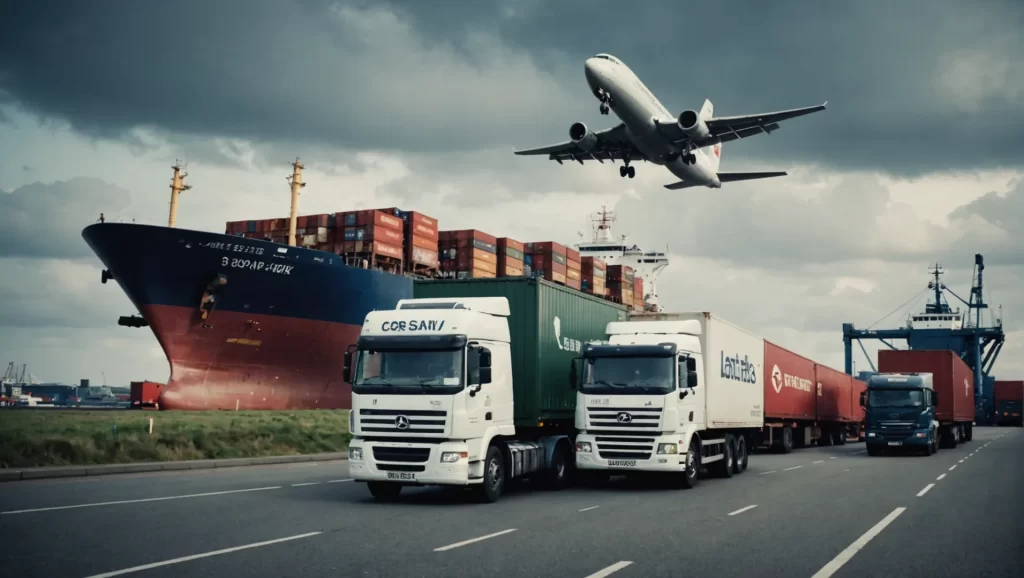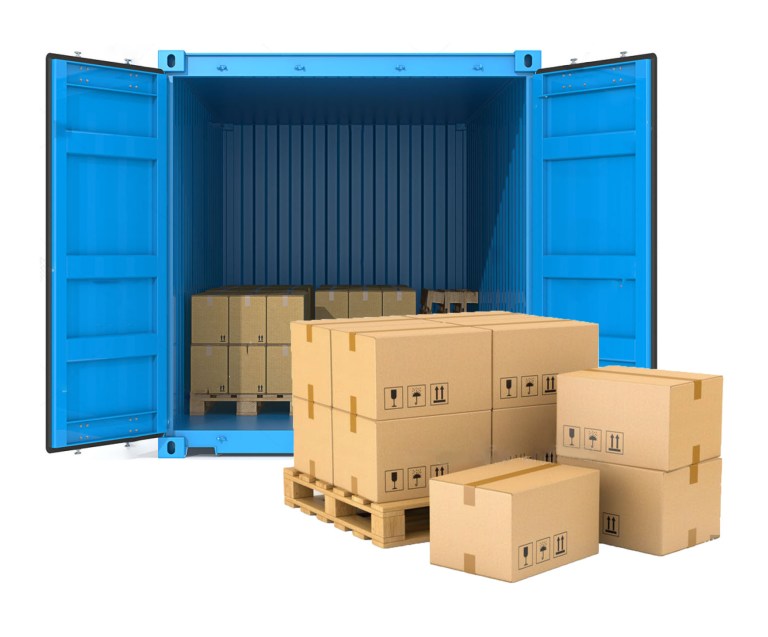- By TOP CHINA FREIGHT
- September 8, 2025
- Shipping
Table of Contents

What are the main shipping methods from China?
Importers can choose from several transportation methods depending on cargo type, urgency, and budget. The three most common are sea freight, air freight, and rail freight, with courier services for smaller packages.
| Method | Cost Level | Transit Time | Best For | Pros | Cons |
|---|---|---|---|---|---|
| Sea Freight | Lowest | 15–45 days | Bulk goods, containers | Cost-efficient, flexible sizes | Slow, affected by port delays |
| Air Freight | Highest | 1–7 days | Urgent, high-value cargo | Fast, reliable | Expensive, weight restrictions |
| Rail Freight | Medium | 12–25 days | Europe & Central Asia | Balanced cost & speed | Limited destinations |
| Courier | Moderate/High | 3–10 days | Small parcels | Door-to-door, easy customs | Expensive for heavy goods |
What are the typical transit times from China?
Transit time depends on the chosen method and destination.
| Destination | Sea Freight | Air Freight | Rail Freight | Courier |
|---|---|---|---|---|
| USA (West Coast) | 15–20 days | 2–5 days | N/A | 5–7 days |
| USA (East Coast) | 28–35 days | 3–6 days | N/A | 6–8 days |
| Europe (Rotterdam) | 30–40 days | 2–4 days | 15–20 days | 5–7 days |
| Middle East (Dubai) | 18–25 days | 1–3 days | N/A | 4–6 days |
| Africa (Lagos) | 35–45 days | 3–5 days | N/A | 6–9 days |
Planning shipments in advance allows businesses to align supply with demand despite longer sea freight times.
Which factors affect shipping costs from China?
Several factors influence freight rates:
1.Fuel surcharges
Oil price changes directly impact sea and air rates.
2.Seasonal demand
Peak seasons like pre-holiday exports raise prices.
3.Container availability
Shortages increase costs.
4.Port congestion
Delays lead to storage fees.
5.Customs duties
Country-specific tariffs and taxes add to costs.
Therefore, companies must track these variables to manage logistics expenses effectively.
How to reduce costs when shiping from China?
Advance reservations help avoid rate hikes
Combine LCL shipments with others to lower costs
Minimize empty space to save money per CBM
Sometimes nearby ports offer cheaper handling
Professionals secure better rates and manage paperwork
What documents are needed for shipping from China?

Proper documentation is crucial to avoid customs delays.
| Document | Purpose |
|---|---|
| Bill of Lading | Proof of shipment and ownership |
| Commercial Invoice | Declares cargo value |
| Packing List | Details contents |
| Certificate of Origin | Confirms manufacturing country |
| Import License | Required for restricted items |
Moreover, electronic submission is increasingly common, which reduces clearance time.
Case Study: Reducing costs with FCL shipping
A furniture retailer in the United States used to ship through LCL, paying high per-CBM charges. After analyzing order volume, they switched to FCL 40ft containers. The result was a 35% reduction in shipping costs and shorter handling times at ports.
Additionally, better inventory planning allowed them to avoid air freight for urgent restocks. This shows how adjusting the method of shiping from China can dramatically improve efficiency and profitability.
What are the pros and cons of sea, air, and rail freight?

| Factor | Sea Freight | Air Freight | Rail Freight |
|---|---|---|---|
| Cost | Lowest per unit | Highest | Moderate |
| Speed | 15–45 days | 1–7 days | 12–25 days |
| Reliability | Port delays | High reliability | Predictable routes |
| Cargo Type | Bulky, heavy | High-value, urgent | Medium cargo volumes |
| Environment | Lower emissions | High emissions | Moderate footprint |
Therefore, companies must evaluate urgency, cargo type, and budget before choosing.
Should small businesses use LCL shipping from China?

Yes, LCL is particularly beneficial for startups or small businesses that cannot fill a full container. It allows them to share container space with other importers and pay only for the volume used. Although handling times are longer, the cost savings are significant.
Moreover, freight forwarders often assist with consolidation, customs paperwork, and last-mile delivery, making LCL an accessible solution for small importers.
Conclusion
Shiping from China plays a critical role in global supply chains, offering businesses multiple transport options depending on their needs. While sea freight remains the cheapest, air and rail provide alternatives for urgent or regional shipments. By planning ahead, consolidating cargo, and working with experienced freight forwarders, companies can cut costs and ensure timely deliveries. Therefore, choosing the right strategy is essential to balance affordability, speed, and reliability.
Need a Shipping Quote?
If you want expert guidance and peace of mind, our team is ready to assist.
TJ China Freight offers tailored solutions to help businesses of all sizes ship more reliably from China.

FAQs
Q1:How do I choose the best shipping method from China?
The best method depends on budget, cargo size, and urgency. Sea freight is cheapest, air freight is fastest, and rail freight is a balanced option for certain destinations.
Q2:Do I need insurance when shipping from China?
While optional, cargo insurance is strongly recommended. It protects against damage, loss, or theft during transit, which can otherwise result in major financial losses.
Q3:Can I track my shipment from China in real time?
Yes, most carriers and forwarders provide digital tracking systems. These platforms allow you to monitor vessel or flight progress, estimated arrival times, and any potential delays.
Q4:How can I avoid delays in customs clearance?
Prepare all documents in advance, ensure accurate declarations, and work with a licensed customs broker. Compliance with regulations significantly reduces clearance delays.
Q5:Is LCL shipping suitable for fragile goods?
Yes, but extra care is needed. Proper packaging, cushioning, and palletizing are essential. Choosing a reputable forwarder also ensures careful handling of fragile shipments.
